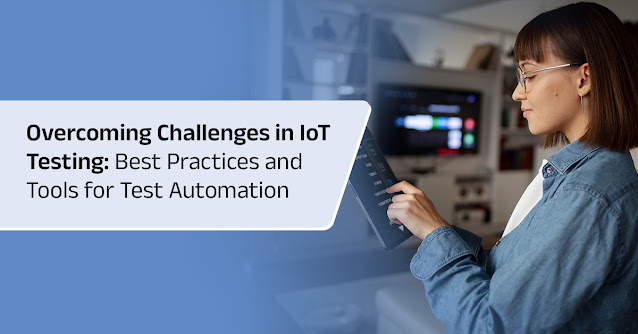Business
enterprises make use of digital engineering services for several reasons. These
include streamlining operations, enhancing efficiency, and staying competitive
in the dynamic digital landscape. Software product engineering allows
businesses to automate various tasks and processes, thereby minimizing or
eliminating the need for manual intervention. Besides, it enables businesses to
craft customized digital engineering solutions unique to their requirements. This
methodology also generates scalable software solutions based on the needs of a
business.
The software solutions play an
important role for businesses. They do so by enabling the latter to handle more
data, accommodate more users, and expand into new markets. In a day and age
where improved customer experience drives the sale or adoption of software
applications, a digital
engineering company allows businesses to enhance the customer
experience. These are achieved by developing intuitive websites, CRM systems,
or mobile apps.
Success in the always-changing world
of software product engineering goes beyond simply finishing a project.
Instead, it has a close relationship with several quantifiable measurements and
Key Performance Indicators (KPIs). These metrics serve as navigational tools,
guiding software development teams toward efficient processes, high-quality
products, and satisfied customers. In this blog, we delve into the crucial key
metrics and KPIs that define success in software product engineering.
Key Metrics and KPIs to Measure Success in Software Product Engineering
Metrics are the quantitative metrics
employed to rate and confirm the overall effectiveness of software products
throughout their lifespan. These enable businesses to understand numerous
facets and traits of a software product in terms of its calibre, dependability,
effectiveness, and efficiency. Businesses may also use these indicators to make
data-driven decisions and obtain a better and deeper knowledge of the quality
of their products.
1. Quality Assurance Metrics:
a.
Defect Density: Through digital QA testing,
this metric measures the number of defects identified in a specific development
phase. A lower defect density indicates higher product quality.
b. Code
Churn: It quantifies the amount of code
changed, added, or deleted during development. High code churn might indicate
indecision or instability in project requirements.
2. Development Speed and Efficiency Metrics:
a. Lead
Time: The time taken from identifying a
task to its completion. Shorter lead times suggest efficient workflows and
reduced bottlenecks.
b. Cycle
Time: It measures the time to complete one
full development cycle. Shorter cycles indicate rapid iteration and
development.
3. Customer Satisfaction Metrics:
a. Net
Promoter Score (NPS): The NPS
measures customer satisfaction and loyalty. It quantifies the likelihood of
customers recommending your product to others, providing valuable insights into
the customer experience.
b.
Customer Effort Score (CES): It
gauges the ease with which customers can resolve issues or achieve their goals
using your product. Lower effort scores indicate a better user experience.
4. Financial Metrics:
a.
Customer Lifetime Value (CLTV): It
calculates the total revenue a business expects to earn from a customer
throughout their entire relationship. It helps in understanding the long-term
value of acquiring a customer.
b.
Return on Investment (ROI): ROI
measures the profitability of a software product by comparing the net profit to
the initial investment. A positive ROI indicates a successful product.
5. Scalability and Performance Metrics:
a.
Response Time: This metric obtained
through digital
assurance and testing assesses the time the software takes to
respond to user actions. Low response times are critical, especially in
applications requiring real-time interactions.
b.
Scalability Index: The scalability index,
as part of digital
assurance services, measures the ability of the software to
handle increased load or user volume. A higher scalability index indicates a
robust architecture.
6. Innovation and Adaptability Metrics:
a. Feature
Adoption Rate: It tracks how users
adopt new features. High adoption rates suggest that your product meets
customer needs effectively.
b. Time
to Market: This metric measures the
time taken from conceptualization to launch a new product or feature. Rapid
time to market is essential to staying ahead of competitors.
Conclusion
Measuring success in software product engineering
is a multifaceted activity involving a careful analysis of various metrics and
KPIs. By routinely monitoring these metrics, development teams may pinpoint
problem areas, raise customer experience, streamline procedures, and promote
innovation. Never forget that obtaining data is just half the battle. The
better part is to evaluate it and use it to inform decisions. In digital
product engineering, it is also necessary to establish a culture of innovation
and ongoing improvement.





